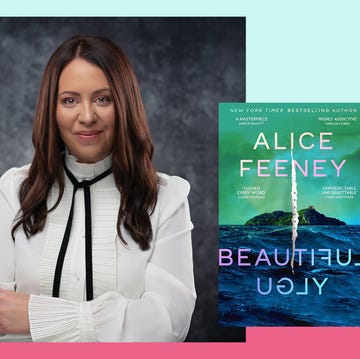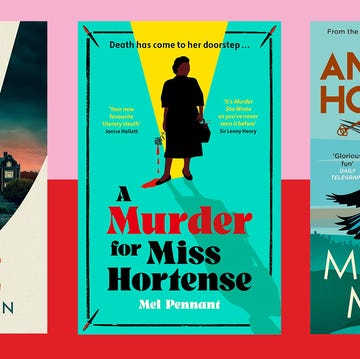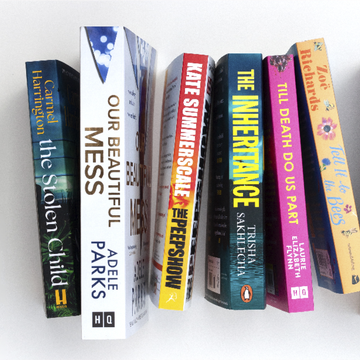When I was six, my grandmother gave me a chocolate biscuit for writing my first story – a thrilling tale about a witch called Bonkers – and since then I’ve been putting pen to paper (or hands to keyboard) in order to escape into the world of fiction. I can’t draw or sing or paint, but I can create people and locations and adventures through the written word, and when it’s going well, these fictional worlds are as real to me as anything can be.
It took me four years to write my first novel. I was working full-time and kept tinkering until a writer friend gave me some advice that I remember often: good enough is good enough. I sent off letters and synopses to nine carefully selected publishers and agents, and they all replied in the same vein: it’s a good story, well written, but we can’t see much of a market for a story about bank fraud in the 1820s. Luckily for me, I had self-published many books in the non-fiction sphere during my career as an anti-money laundering adviser, and so I decided to try my hand at self-publishing my novel, too.
I’m now a self-published author of nine historical crime novels and although I’m not (yet!) troubling the bestseller lists, I do have a loyal and growing band of readers – and a thrilling and absorbing second career that stretches both my creativity and my organisational skills. With nearly 9,000 novels sold, here’s what I’ve learned about self-publishing…
What to read next
You don’t have to be a tech genius to do it
Self-publishing, at its simplest, requires you to upload two files: a cover file and an interior file. Most authors use Amazon to publish their paperbacks and e-books, as it’s been offering self-publishing services for a couple of decades now and has made the process as slick as possible. It’s all done through their KDP platform, and they guide you through it step by step.
There are alternatives – such as Ingram Spark – and the best way to choose the platform that will best suit you (for instance, a large-format book with lots of pictures is very different to a standard words-only novel) is to join one of the many self-publishing forums.
Self-published authors are very friendly and everyone remembers how daunting it is to start out, and you’ll get plenty of helpful advice and hand-holding. You’ll need to make sure that your interior and exterior files are in the correct format – usually PDF for a paperback. If it’s an e-book, it’s simply a matter of sending them an epub file to download to their e-reader – this is all taken care of by Amazon. If it’s a paperback, it’ll be printed, bound and posted to them. This is possible because of the development of POD (print-on-demand) publishing technology, which means that the days of having warehouses stacked with books waiting for possible orders have gone.
Never pay to be published
A common misconception is that you have to pay to self-publish a book, but the good news is you don’t. Uploading your files to Amazon or one of the alternative platforms costs you nothing; the book delivery service (Amazon, iBooks, and so on) takes their commission from the price paid by the buyer (I call it their nibble!). So if you sell nothing, it costs you nothing.
However, you can choose to spend money on preparing those two files – and on marketing your book once you’ve self-published it. The key thing to remember is that it’s up to you to choose where in the process to spend your money – generally, on the aspects you don’t want to do or can’t do. Taking me as an example, I don’t spend anything on preparing my interior file (apart from on the mountains of chocolate biscuits that I consume during the writing process, of course). I’m happy to do my own formatting, but I do spend money on the cover file, as I have no artistic talent at all and an experienced cover designer will make your book stand out on the screen and on the shelf.
And when it comes to marketing, I pay for little giveaways, such as bookmarks, and for ads on Amazon as most of my online sales are through that channel. For the first three months, I was paying out more than I was earning through sales generated by those ads, but now I’m usually in (small) profit at the end of each month.
Think carefully about the cover
Cover design is – unsurprisingly – an art form. You need to be able to convey, in a small space (remember that on Amazon, your cover will be about an inch square!), the title and genre of your book. There are professional cover designers and I recommend using one – you can get recommendations from other self-published authors (or find books with covers that you admire and contact the author to ask them). A good tip when thinking about your own cover is to go into a bookshop, look at the section in which your book would be sold and take photos of the covers you like and those you don’t like – this will help you to identify the colours, shapes, fonts and more that will work for you.
Check it and check again
One thing that’s vitally important is that your book – although self-published – is as professional as it can be. This means having a cover that doesn’t look like a toddler made it and – crucially – eliminating as many errors as you can. Typos creep in, and you need to read and reread to catch them. Also look for daft errors: in one of my books, a character took his hat off three times in one scene…
I do three drafts of each book, then reread it twice more. I also do an exchange with other writers – they check my book and I do theirs. These are longstanding friends in the self-publishing world – most of them I’ve never met in person, but we exchange ideas and encouragement through various groups. One I would recommend – although you do have to pay – is the Alliance of Independent Authors (ALLi). They have a very active forum, and also produce a wealth of exceedingly detailed and reassuring guides that are updated constantly to reflect changes in the self-publishing world.
Be your own cheerleader
Being a self-published author requires you to have two sides to your personality: you need the introversion of an author and the extroversion of a salesperson. You must be your own loudest cheerleader – at least twice a month, I’m standing up raving about the 1820s to a local book group or a WI meeting or whoever will have me.
It’s also this personal approach that will get your books into bookshops; my books can be ordered by any bookshop in the country, but they’re actually stocked by the ones where I’ve gone in and met the manager. And I’ll be honest: I still get excited seeing my books on the shelf in a bookshop, holding their own alongside traditionally published titles. That’s success as far as I’m concerned.
Susan Grossey has written a series of seven historical crime novels set in London in the 1820s (the Sam Plank Mysteries) and is now in the middle of a series of five novels set in Cambridge in the same decade (the Cambridge Hardiman Mysteries). Her titles have been shortlisted three times for a Selfies Award for self-published books. You can subscribe to her free monthly e-newsletter, and as a gift for signing up, you’ll receive the e-book of her first novel, Fatal Forgery.













